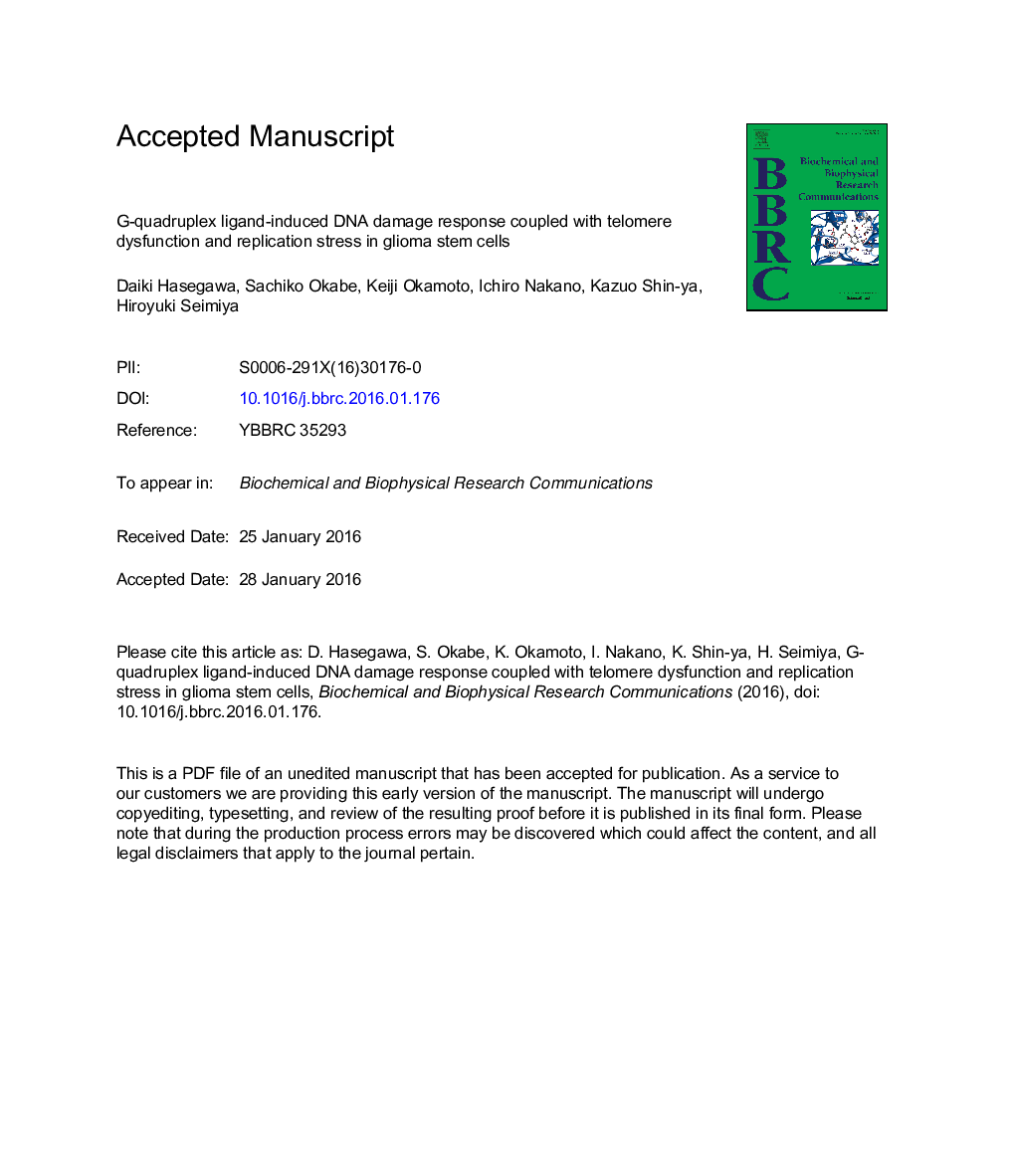| کد مقاله | کد نشریه | سال انتشار | مقاله انگلیسی | نسخه تمام متن |
|---|---|---|---|---|
| 10748787 | 1050281 | 2016 | 38 صفحه PDF | دانلود رایگان |
عنوان انگلیسی مقاله ISI
G-quadruplex ligand-induced DNA damage response coupled with telomere dysfunction and replication stress in glioma stem cells
دانلود مقاله + سفارش ترجمه
دانلود مقاله ISI انگلیسی
رایگان برای ایرانیان
کلمات کلیدی
موضوعات مرتبط
علوم زیستی و بیوفناوری
بیوشیمی، ژنتیک و زیست شناسی مولکولی
زیست شیمی
پیش نمایش صفحه اول مقاله

چکیده انگلیسی
Glioblastoma (GBM) is an invariably fatal brain tumor in which a small subpopulation of self-renewable glioma stem cells (GSCs) contributes to tumor propagation and relapse. Targeting GSCs could therefore have a significant clinical impact for GBM. Telomestatin is a naturally-occurring compound that preferentially impairs GSC growth by perturbing transcription and inducing a DNA damage response. Telomestatin stabilizes G-quadruplexes (G4s), which are guanine-rich four-strand nucleic acid structures observed in vitro and in vivo. However, the mechanism underlying the GSC-selective nature of the DNA damage response remains unknown. Here we demonstrate that GSCs are more susceptible to telomestatin-induced telomere dysfunction and replication stress when compared with GSC-derived non-stem glioma cells (NSGCs). Telomestatin induced dissociation of the telomere-capping protein TRF2 from telomeres, leading to telomeric DNA damage in GSCs-but not in NSGCs. BIBR1532, a telomerase catalytic inhibitor, did not preferentially inhibit GSC growth, suggesting that telomestatin promotes telomere dysfunction in a telomerase-independent manner. GSCs and NSGCs had comparable levels of G4s in their nuclei, and both responded to telomestatin with phosphorylation of RPA2 at Ser33-a hallmark of replication stress. However, activation of the checkpoint kinase Chk1, induction of a DNA damage response, and subsequent growth inhibition occurred only in telomestatin-treated GSCs. These observations suggest that telomestatin impairs GSC growth through removal of TRF2 from telomeres and potent activation of the replication stress response pathway. Therefore, a novel G4-directed therapeutic strategy could specifically target cancer stem cells in GBM.
ناشر
Database: Elsevier - ScienceDirect (ساینس دایرکت)
Journal: Biochemical and Biophysical Research Communications - Volume 471, Issue 1, 26 February 2016, Pages 75-81
Journal: Biochemical and Biophysical Research Communications - Volume 471, Issue 1, 26 February 2016, Pages 75-81
نویسندگان
Daiki Hasegawa, Sachiko Okabe, Keiji Okamoto, Ichiro Nakano, Kazuo Shin-ya, Hiroyuki Seimiya,